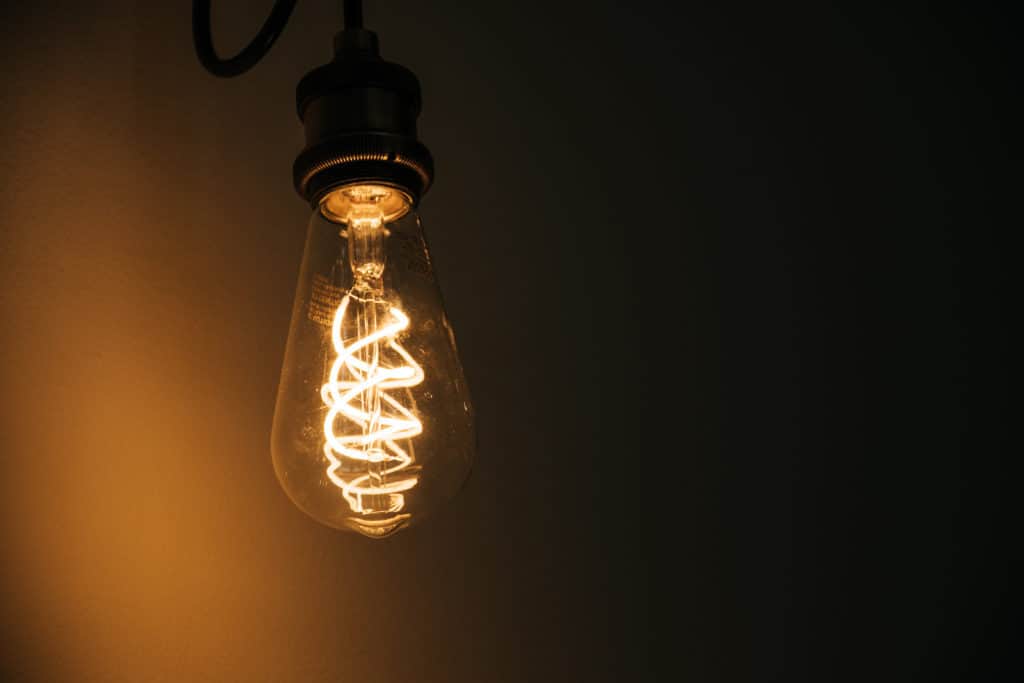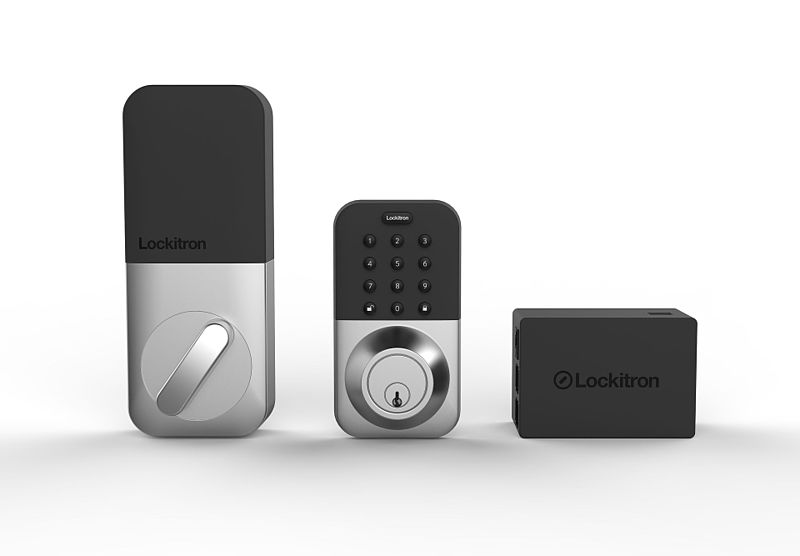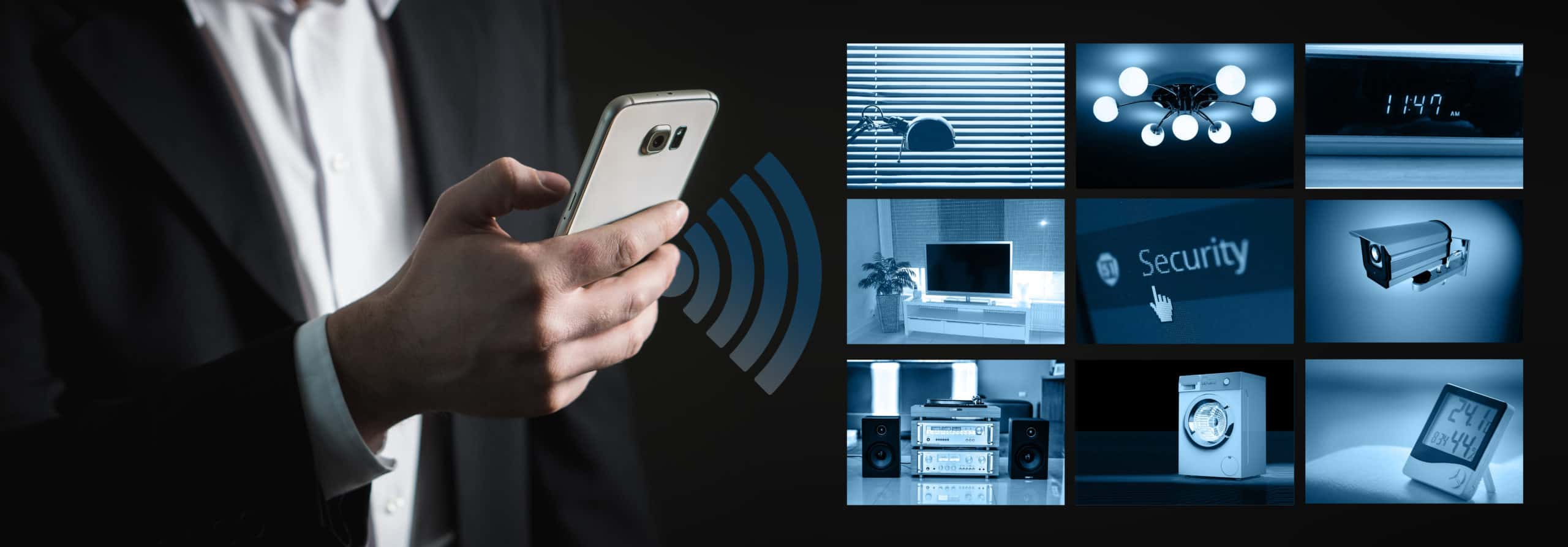Smart homes aren’t going anywhere! 2020 saw the uprising of new technological advancements in this particular field, and we can see almost a million gadgets surfacing the shelves in your favourite high street shops and online retailers. Living smart is not just a hype but is slowly yet surely becoming a necessity and ultimately would take over the conventional methods of doing things both in your homes and the outside.
In this article, I dig deep into the topic of what sort of problems do people face while living comfortably in their homes and how do these smart gadgets tend to or are supposed to solve these problems for the homeowners. Stick around to find out what most exciting part of being a smart homeowner is and how these owners including myself, have gotten rid of chores and bottlenecks at our own homes using the smart IoT (Internet of things) gadgets.
What problems do smart homes solve? The answer is pretty straightforward. All the smart home gadgets that are available right now in the market are supposed to be stand-alone devices. Which means, that you need to create and integrate a smart home network of your own for you to equally qualify as a smart homeowner. These devices alone won’t do anything if you haven’t thought about a plan on how to integrate them into your daily routine and club them together with other devices to automate your home.
Having installed fancy-looking gadgets (Ahem! Smart Home Gadgets) in your home doesn’t qualify for a smart home. Yes, I said it! It entirely depends on what you do with these gadgets and how you program and teach them to carry out tasks in an automated way, helps you stand in the queue of a smart homeowner. It definitely takes a lot of effort and zest to go on about configuring these gadgets, and at the end of the day, they do have a learning curve of their own. Once these gadgets adapt to your living, you can then rest assured that you have a home that is fully capable of handling tasks that otherwise would require time out of your busy schedule to be carried out. And must I say, in a perfect way!
So let us now discuss what kind of issues do normal homeowners face and how can a smart home help solve them!
Firstly home automation helps in getting rid of recursive activities that otherwise would hog up boatloads of your time. Things such as geysers, heathers and other home appliances. With the help of automation, all of these can be toggled on and off with the flick of a switch. And eventually, once the smart gadgets are acquainted with your usage patterns, they can schedule their operations at their own accord. Talk about machine learning people! This particular feature of the smart gadgets allows you to control your home from miles away or from you lying on your couch and not willing to move.
Second and the most critical factor of a smart home is the ability to enhance the security of your home. There are a plethora of devices available in the market today that can help keep your home secure and pilferages at bay. Every time there is a breach or a possible intrusion at your home while you are away, the gadgets send you a notification. Almost all of these well-renowned manufacturers are now pumping out smart security gadgets that are well capable even to inform the police in case there is a break-in and/or intrusion. The added benefit of utilising smart gadgets for your home security is that these gadgets are equipped with backup batteries. So in case there is an invasion, and the power cables are cut under the illusion that it would decommission the security systems installed, then the intruder is in for a big surprise. Hey, they shouldn’t know that you have a smart security system installed that has a built-in battery, now do they!
Thirdly, convenience. You do not necessarily need to go individually to each room in your house to ensure that the lights are switched off, your fans are off and whatnot. All of this is easily controlled by the help of a smart home, and you can flick the switch on/off of each individual room or the entire house in one go.
Fourth and needless to say, one of the most important ones is “safety”. With the help of smart home automation, can you calm your nerves even if your kids are home alone? With the help of smart gadgets, you can monitor your kids while they come back from school and the nanny is looking after them. You can easily communicate with them using a two-way camera such as the Nest Indoor Cameras. Usage of Smart CO Detectors at home dramatically limits the risk of possible leakage from both your HVAC system and the heating.
So all in all, it wouldn’t be wrong when I say that a smart home is one which is capable of
- Think
- Protect itself
- Knows what you (the homeowner) expects from your home and does all the chores
I hope I haven’t ticked off the industrial leaders in this smart home world by concluding the above 3 points about a smart home. But to be honest, this is what my philosophy about a smart home is and what I expect my smart home to be. And you are no different? Unless you are a Martian.
Without further ado, I know you all must have been waiting for those 11 case studies; or let us just call them examples; in which smart home automation has solved the recurring problems of each non-smart homeowner. Then let us get straight to it!
Table of Contents
11 Examples of How a Smart Home Solves Your Daily Problems
Needless to say, smart homes are more accessible to setup than they ever were in previous years. They are useful for solving those annoying problems that would otherwise require you to spend your quality time over monotonous chores.
Never Forget To Leave the Lights On

It happens so very often that this is the most common and the worst annoying problem of any homeowner. You get home from work just to find out that the lights had been on throughout the day. Or even better, your children are in the habit of forgetting to switch off the lights when they go out of the home.
The easiest and the most intelligent solution to this problem is the use of smart lights. With the help of smart lights, you can forget about leaving them switched on while you step out of your home every day for work. The control that this particular smart device provides to the homeowner is absolutely flawless and needless to say it adds up to a considerable energy saving too. Which in return, ends up in cost-savings.
The Garage Door Dilemma

With a raise of hands, who over here has forgotten to close their garage doors; only to find out later by a phone call from your neighbour? That’s right, its “I”!
If there is anything worse than forgetting to leave your lights on, is leaving your garage door open. This act alone jeopardises the whole security of your home and in fact, is one of the reasons how robberies happen. Head over to MyQ website, a smart security garage manufacturer, and find a product that fits your budget and needs. In all honesty, MyQ is the top-rated product when it comes down to garage door automation and security. You just can’t go wrong with them!
After you are done with the installation of your brand new smart garage door opener, you can rest assured that you won’t have the need to drive back all the way from wherever you were just to nullify your hunch of forgetting to lock the garage. And hey, who likes to be called at 8:15 in the morning by their neighbours just to be told that they forgot to lock the garage! *Points at self-* *wink*
The beauty of smart garage doors is that they can be controlled via smartphone apps as well. Alongside the scheduler that is installed in it and the motion sensors it comes along with, you can always use the app to close the door in case the scheduler is off-schedule.
When There Is a Leak, You Are the First to Know

Water leaks are inevitable, whether your house is newly built or an old one. You are prone to have a leaking faucet, damaged piping or a malfunction in your HVAC system.
Such leakages are easy to miss and can wreak havoc in your home if not attended to in prompt and timely fashion. Especially if this mishap takes place when you or anybody else is not in the house.
Samsung Electronics has come up with a state of the art Water leak sensor, namely “SmartThings Water Leak Sensor” that once installed in places that are prone to leaks, can immediately send notifications to your smartphone app. If you have got a NEST Smart Thermostat too installed in your home’s smart ecosystem, then rest assured in case of a leak the thermostat would cut off the HVAC and the heating system to deter any possible damages. Altogether more reasons to invest in a NEST Smart Thermostat for your home now as well.
Forget About Losing That Dreaded Remote Again

Is it just me, or does this happen to you? That every single time when I slide into the couch with a bowl of popcorn and a litre bottle of coke, just to watch my favourite movie on Netflix, that my remote somehow magically wander off into the nether. Arrgghh…….
Fret not, with the help of the Amazon’s Fire TV cube you can now do all that I have written above without the worry of losing your remote again. Because guess what, the Amazon’s Fire TV Cube comes packed with smart features that allow it to be voice-controlled and is fully integrated with Amazon Alexa. Hello Mrs Jetsons! I, too, am now living your life.
Quiet contended with your current setup of watching and streaming your favourite videos and not in the mood to invest into the Fire TV Cube just yet, then fret not. Hop onto the PlayStore (For Android Users) or the AppStore (For the Apple users) and search for the remote control app for your particular TV make. Almost all the smart TV manufacturers have now built their own dedicated apps that work flawlessly instead of the physical remote. Voila! You can now use your smartphone to control your smart TV too. What a day!
Keep the Thermostat Where It Should Be

It never stops to amuse me that whenever I used to enter my home, the heating used to be ramped up so much that I thought I had entered into an oven. Used to ask the Grandma, and her reply used to have been “I didn’t even notice”. Only to find out later that the kids were at it again and had been playing with the thermostat.
Let us be honest, the kids are not to be blamed for ramping up or down the heating and the cooling system. Just to get those heating and cooling levels up and down a tad bit, the cost implications are enormous for the bill-payers. Which is “YOU”!. Kids won’t know and understand what that is, and eventually, we are the ones who take the hit at the end of the day.
Say hello to the NEST Smart Thermostat. There are countless benefits of you installing this particular thermostat, and I have written a detailed article which should serve as a buying guide for you on the NEST Smart Thermostat. You also have the privilege to lock the NEST thermostat once it is installed. Therefore giving you the peace of mind that your kids won’t be meddling around with it and changing the temperatures.
Elimination of the Energy Vampires

Let us first understand what we mean by the term “ENERGY VAMPIRES”. Energy Vampire is both a fictional and a religious creature that is known to suck off “life force” from other living beings around us. God! Did I just say that?
Alright back to the topic. Energy Vampires; also known as
- Standby Power
- Vampire Draw
- Phantom Load
- Ghost Load
All these are the terms that are used to indicate such electronic appliances that use power even if they have been switched off. Let me explain.
Let us consider an example here of your smart television. After a good watch, you power off the device using your remote control. What in actual is happening here is that your TV goes into a hibernation mode. Nothing wrong in this, since the TV requires a tad bit of power for you to switch it on again using your IR-based remote control.
Similar is the case with your smartphone chargers. Once you remove the cord from your smartphone after having used it. There is still power a tad bit of power present in the wall charger.
Other prime examples are your favourite Xbox and PlayStation consoles. Although you have powered them off, they have not entirely powered off. They too are in hibernation state where when you trigger the “ON” switch; they would just resume from where you had left off. A similar concept is also applied to your laptops. They do not completely shut down but instead go into a hibernation state. This ensures that all the background activities along with the essential and critical updates keep on going even though the machine is not used and the display is off.
How Much Energy Does a TV Use When On Standby
For a standard, the average vampire energy used by a TV is approximately 3.08 Watts.
Vampire Energy Summary Table
Take a look at how much vampire energy your typical house electronics are using.
| Electronic Device | Electricity Used (While ON) | Electricity Used (While OFF) |
| Smartphone charger | 3.7 W (while charging) | 2.2 W (charged) |
| Laptop |
44.3 W (while charging) 30 W (when fully charged) |
8.9 W (while OFF) 15.8 W (while in SLEEP mode) |
| Desktop Computer | 74 W |
2.8 W (while OFF) 21 W (while in SLEEP mode) |
| Clock Radio | 2 W | 0 W |
| Copier | 9.6 W | 1.5 W |
| Inkjet Printer | 4.9 W | 1.3 W |
| Laser Printer | 131.1 W | 1.6 W |
| Microwave | 1433 W | 3.1 W (when ready) |
| Smart Television (32”) | 162 W | 3 W (approximately) |
Keen to know more? Head over to STANDBY and key in the gadget you want to find out the standby time of.
This equates to a total whopping figure of 20% in correspondence to the world’s overall electricity usage. Which in itself is “HUGE”. Albeit, there is a “1 WATT Initiative” campaign being carried out globally. Head over to this link here to read more about it.
Alright, so now how to counter this whole vampire energy dilemma. The traditional way of avoiding this is by simply removing the power cord from the wall-socket of each and every appliance you want to eliminate from sucking off the vampire energy. But is this practically possible? I certainly would take an educated guess and reply with a firm “NO!”
Get your hands on a smart plug, you can physically then connect each and every device onto that plug, and then you may easily toggle the device connected to it, off/on; doing all that remotely via the smartphone app. Even better, you can set up a schedule on your smart plugs which would allow you to cut the power to that particular device whenever you are not at home. You can do this with practically each and every single, smart device that you own in your smart home infrastructure.
I know the question here is, “Wouldn’t connecting all the devices individually on each smart plug going to be expensive?” Well, “Yes!” What you could potentially do is to connect them all onto a power strip and then connect that power strip onto the smart plug. Voila!
Porch Pirates

Glitter bomb them? Heck, No!
Unfortunately, porch theft is on the rise these days. More the e-Shopping is soaring in trends and the companies willing to deliver your parcels right at your doorstep, more the porch pirates originating. They find it easier just to steal the package and wander off into the woods.
Needless to say, we all are acquainted with Amazon and Google. Hey, you ended up on this article via Google. Yay Google!
Both of these companies offer doorbell cameras. A recent study confirms that the use of smart doorbells has reduced the ratio at which porch thefts used to occur. In a very simplistic way, let me explain to you how a doorbell works.
- Whenever someone walks up to your doorstep, the RING Camera sends you a notification about a foreign body present in front of your door. You can watch the live video feed with the help of the in-built camera on the RING device.
- There are an inbuilt speaker and a microphone that enables you to communicate 2-way with the person standing in front of the door. As soon as you identify that this person should not be present at your doorstep, you can reach out to them via the RING doorbell and say something like “I can see what you are doing. Walk away, or I am calling the police”.
RING doorbells have been widely accepted by the mainstream audience and to be honest, videos are floating all over the internet of porch pirates who have walked away after seeing that they are being invigilated through the camera. To top that off, these video doorbells have also established a status that the porch pirates do not want to get near such houses where they are installed. Thus warding off the most newbish of the porch-pirates.
RING over the years has launched a couple of models to their video doorbell. Head over to my article about the Ring Doorbell and its benefits to have a complete understanding of the product.
You Don’t Need To Distribute Your Home Keys Anymore

I get it, you are a socially active person and got your home keys distributed to one, but two and three and God knows how many keys! But let us be honest, do you really have a track of how many keys you got developed? And how many keys you had handed out? The obvious answer is “No!”
The truth of the matter is that you can’t revoke physical keys. Unless you want to go through the hassle of replacing the deadbolt allover and start developing keys to be distributed again. Meh! That’s an old school way of doing things and is cumbersome and both costly. Period!
With a smart lock, you can say bye-bye to this problem once and for all. Instead of handing out physical keys to your accomplices and family members, just set up the device to accept a specific patterned code (numerical) and then allocate that code against the name of the person in the database of the smart lock. Once the system is set up, you can then even monitor and keep track of how many times it has been used and much more. Obviously, this greatly depends on the type of device that you intend to buy in terms of a smart lock gadget. The security of smart locks is top-notch, and it is virtually impossible to break into these devices.
The only setback in the smart-Locks is that you, as the owner of the gadget, need to ensure that you pull out all the unused codes that you had handed out. Since if the code gets into the hands of a wrong person, then a break-in is guaranteed. That is something which no one wants to entertain!
Say Bye-Bye To Home Shouting

Ever had your mum yelled out to you all the way down from the kitchen calling in for dinner? Well, my mom has a decent vocal box, and I am always at the receiving end of it. This tends to get annoying since there is virtually no possible way of communicating with other people in the house, and people resort to yelling and shouting at each other to draw their attention. This is widely referred to as the “HOME SHOUTING”.
Communication is one of the areas where a smart home system excels at. Initially, the problem was resolved using the intercom systems. Which I must say did attend to this problem, but in the new century and especially in 2020, using intercoms is both old-school and quite frankly requires you to pull cables and drill holes in the walls for it to be installed. Who has the time do all this?
Google Home’s Broadcast Feature and Amazon Echo intercom function have helped nip the evil in the bud! By that I mean, these both gadgets are well renowned and provide endless functionalities. One of the prime ones being the INTERCOM feature. Just keep a device in each room and voila! You now have a full-fledged capable Intercom system at your disposal.
Say NO to Home Shouting!
Morning Coffee – Who would brew it?

I can’t imagine not having my cup of coffee in the morning. And since I and my wife both end up assuring each other “I would do it tomorrow, please you brew the coffee today!”, it tends to get monotonous. Who likes to wake up in the early morning hours and force roll themselves out of bed to get ready for work. On the top, having to brew the coffee and going through that tedious process of doing everything yourself to have it. Nuh-uh!
Say hello to the Smart Coffee Makers. With a smartphone app that comes with the particular make of coffee maker that you intend to buy, making coffee and having it drip into the jar is just a matter of tapping the “START” button via the app.
And if you have got a complete IoT (Internet of Things) infrastructure, then you can even schedule your coffee maker to brew the coffee right when you step out of bed. All of this can be done even without the requirement of an app or human intervention. More to this later in the IFTTT article that I intend to write in the upcoming weeks.
Watering Your Garden

You love having a healthy garden in your backyard but frown at the task of watering it on a timely basis. Sometimes you forget to switch off the sprinkler and the other times you forget to switch them ON entirely. Who loves to get shouted by their wife’s when all this happens! Yeap, that’s my hand that you can see.
Let me introduce you to a gadget that is capable of handling all this without any additional fuss. RACHIO Smart Sprinkler allows you to automate this whole process. The RACHIO system is merely a smart controller, and you would be using your own sprinkler system with it. Once the device is connected and ready to fire, all you need to do is to set up schedules on it using your smartphone.
The best part of this gadget is that it has a built-in weather data of your geo-location and it would skip the sprinkling on that particular day and time when the showers are happening or are about to happen. You can save massive energy bills using this gadget alone. So haste into getting your hands onto one of these.
It is compatible with
- Amazon Alexa
- Apple HomeKit
- Google Assistant
- NEST
- IFTTT
- SmartThings
Related Questions
What Are the General Issues in Smart Homes?
The only concern of running a smart home is from a “security point of view”. Therefore it is essential that you, as the consumer, do not run off buying gadgets from brands that are unknown or are in their Kickstarter stage. You are best advised to resort to well-reputed vendors and brands since they have a massive marketing budget and a dedicated support team that is working round the clock to update the devices. With unknown brands, you never know when they would stop updating the firmware; thus leaving your devices prone to getting hacked.
For best practices, I highly recommend you read my article on the best practices to prevent getting hacked in an IoT environment.
How Many Homes Have Smart Devices?
There is no exact figure since the number is ever-changing and there are a plethora of smart gadgets that are not even accounted for if there ever was a calculation made. But according to a Swedish research firm, namely “BERG”; it says almost 63 million American homes will qualify as being given the “SMART” title by 2022. That is 2 more years’ people!
Care to know the total number of Homes in the USA? That is 138.45 million.
According to the IoT Analytics Company, that there are approximately 7 billion connected IoT devices. That’s a massive number indeed.
How Many Smart Homes Are There In The US?
According to SPGlobal.com, the total number of US households that qualify as “smart” is approximately 12.5% of the total US households, at the end of 2016. Given that entire USA homes are 138.45 Million in number, this roughly equates to approx. 17 Million houses in the USA that are Smart.
This percentage is forecasted to grow to 28% in 2021. This equates to an increase of 3.1 Million U.S houses between the periods of 2016 – 2021.
What Makes a Device Smart?
The most straightforward answer is, any electronic device that has a built-in protocol to communicate with other devices and the environment; qualifies for a “SMART DEVICE”. Let us not complicate things which are not supposed to be complicated.
By protocols, there are quite a few of them. To list a few
- Bluetooth
- ZigBEE
- NFC
- Wi-Fi
- LiFi
- 3G
…… And many more
How Many Households Own a Smart Speaker?
According to Nielsen.com, there are approximately 33.2 million smart speakers in US houses. With few of them owning more than 1 smart speaker.
What Was the First Smart Device?
World’s first-ever smart device was called the ECHO IV, built-in 1966 – 1967. This device, although never made it to the market but was capable of controlling
- Home’s temperature
- Switching the lights ON and OFF
- Compute shopping lists
Conclusion
The list of gadgets and smart devices that help you overcome cumbersome tasks and chores at your home can indeed be very exhaustive. And this article just shares the opinion from a personal usage point of view. This is just the tip of the iceberg people!
My best advice to you would be to start off slow and buy one gadget at a time. Configure it completely. Let it adjust and learn your requirements, and at the same time, you as the owner of the shiny new gadget spend time on the device learning all of its features and customising it to your requirements. Once that is done, head on and jump to the second purchase. And so on!
Do not ever haste into shelling out boatloads of money on smart devices as it tends to get confusing if you are bombarded with a plethora of gadgets at the same time.
Happy “JETSONS” home people!



